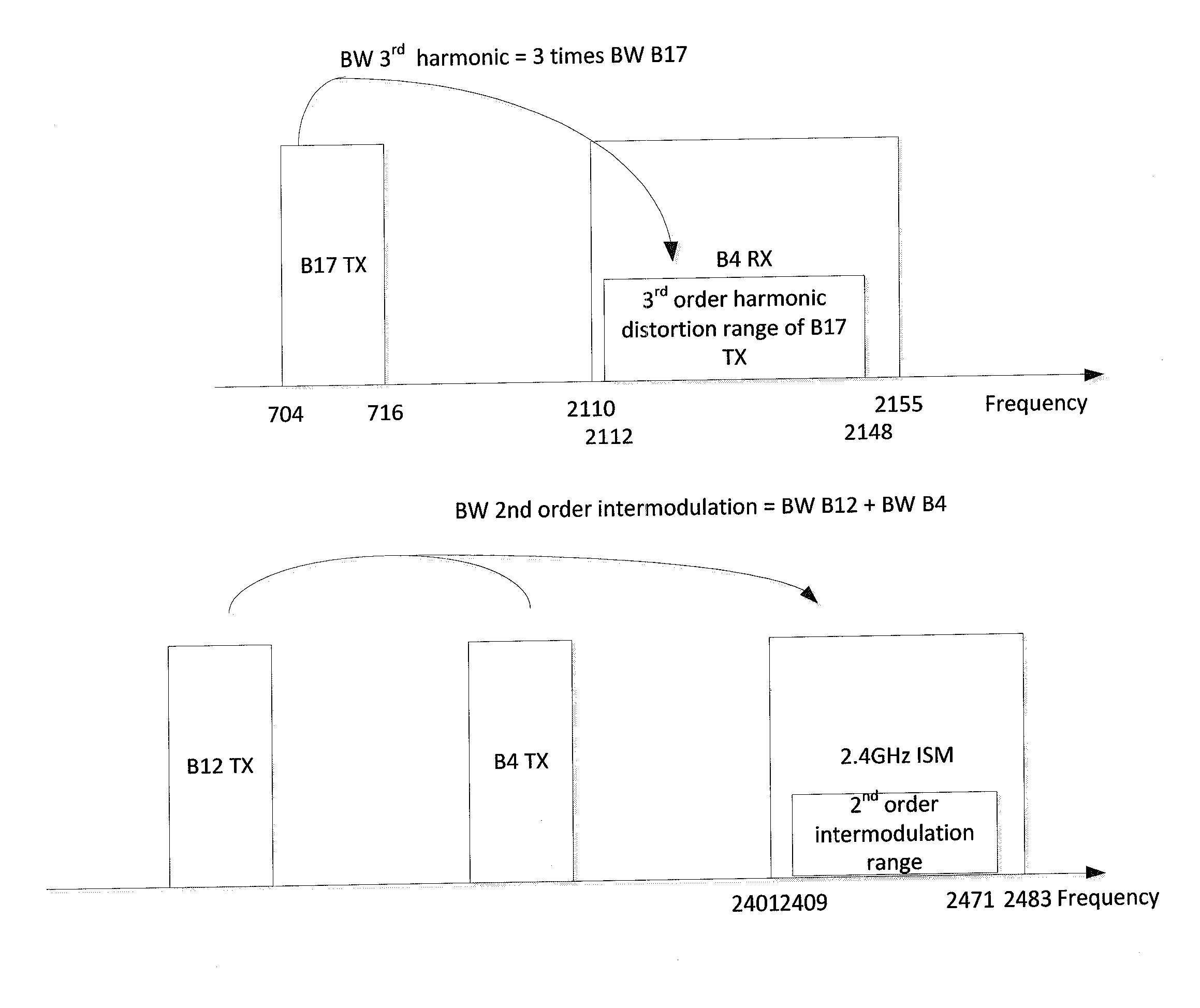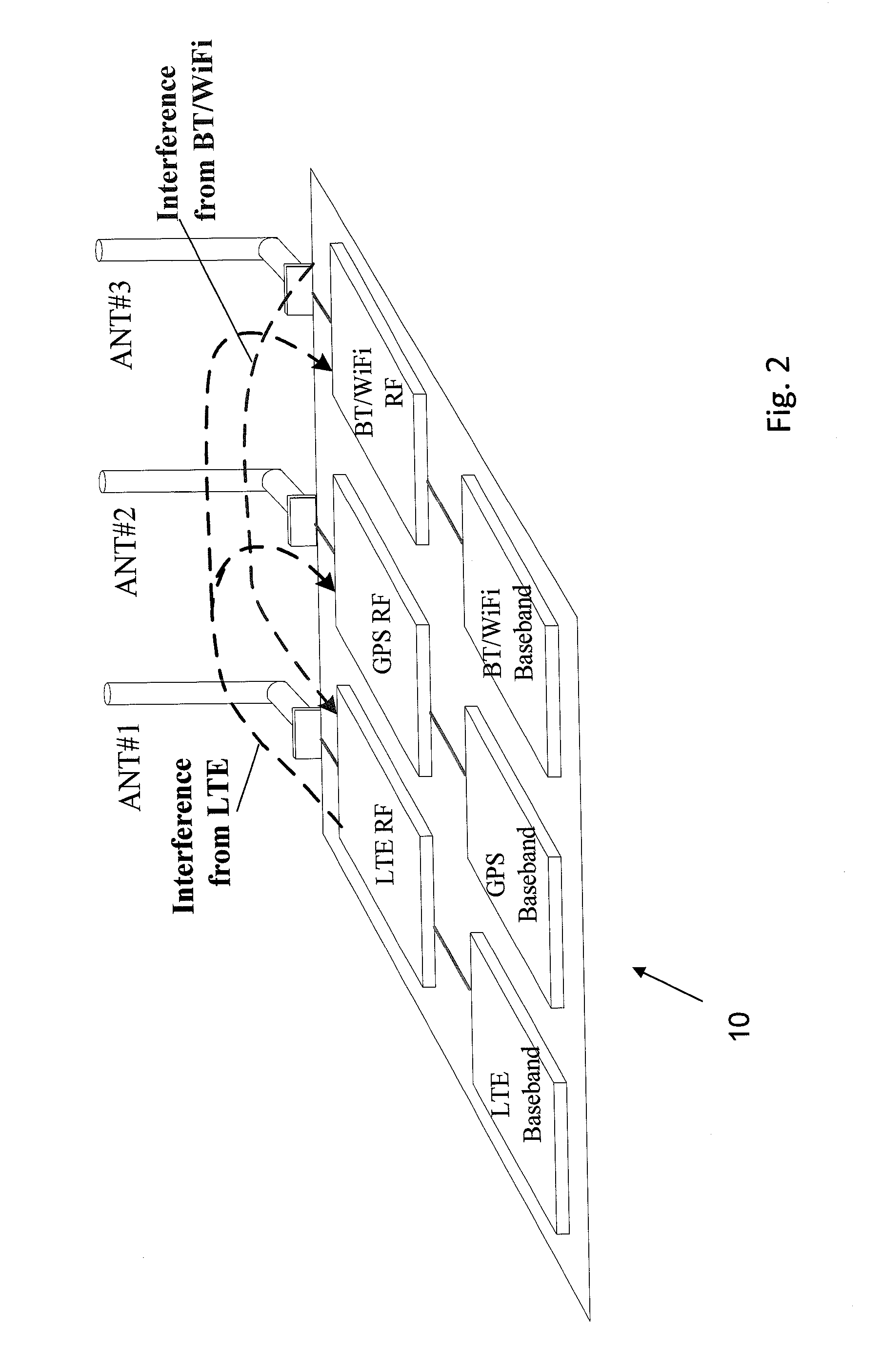Interference Control Mechanism in Multi-Band Communication
a control mechanism and multi-band communication technology, applied in the field of multi-band communication interference control mechanisms, can solve the problems of insufficient rejection of current state-of-the-art filter technology, more complicated interference situations, and inability to solve interference problems by single generic rf design, etc., to achieve sufficient frequency separation, enhance data rates, and extend communication networks
- Summary
- Abstract
- Description
- Claims
- Application Information
AI Technical Summary
Benefits of technology
Problems solved by technology
Method used
Image
Examples
Embodiment Construction
[0035]In the following, examples and embodiments of the present invention are described with reference to the drawings. For illustrating the present invention, the examples and embodiments will be described in connection with a cellular communication network based on a 3GPP LTE or LTE-A system wherein at least one further communication network is provided with which a UE can conduct a communication, such as an ISM network or a GSNN system. However, it is to be noted that the present invention is not limited to an application using such types of communication systems, but is also applicable in other types of communication systems and the like as long as interferences between communications may occur.
[0036]A basic system architecture of a communication network where examples of embodiments of the invention are applicable may comprise a commonly known architecture of one or more communication systems comprising a wired or wireless access network subsystem and a core network. Such an ar...
PUM
 Login to View More
Login to View More Abstract
Description
Claims
Application Information
 Login to View More
Login to View More - R&D
- Intellectual Property
- Life Sciences
- Materials
- Tech Scout
- Unparalleled Data Quality
- Higher Quality Content
- 60% Fewer Hallucinations
Browse by: Latest US Patents, China's latest patents, Technical Efficacy Thesaurus, Application Domain, Technology Topic, Popular Technical Reports.
© 2025 PatSnap. All rights reserved.Legal|Privacy policy|Modern Slavery Act Transparency Statement|Sitemap|About US| Contact US: help@patsnap.com



